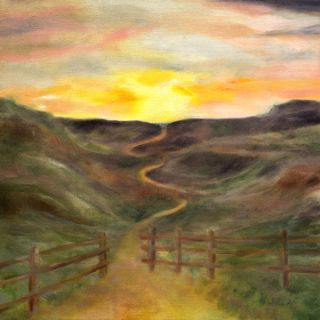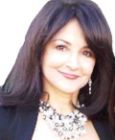Stress
Getting to Oz: The Personal Journey Home to the True Self
Self-knowledge: the most powerful tool we have for seizing opportunity.
Posted February 7, 2015
I want to tell you a story. It may be one you know, but it is worth retelling, as it forms the basis of today’s post and my book Getting to Oz. As you read, I suggest you think about the powerful message this story carries. It is the reason this simple tale has inspired so many of us for more than a century:
A girl named Dorothy runs away from home with her little dog Toto. She is swept up by a powerful tornado and deposited in a faraway place called Oz. At first she is frightened, and only wants someone to help her get back home. But despite her fears, she soon acclimates to her surroundings, making the most of any help that is offered. Joined by her new friends—a lion, a scarecrow, and a tin woodman—she makes her way along the yellow brick road to Oz, the home of a great and powerful wizard whom she believes will help her return home. In the end, she learns she does not need his help, or anyone else’s. Going home is, and always has been, totally within her own power.
There are many positive messages in this simple story, but this one always stood out for me: There is no place like home. When I first read the story, I took this message at face value. But as I thought more about it, I realized that Dorothy’s burning need was not for home in the traditional sense. After all, wasn’t she running away from home, trying to find her own way in the world? Dorothy’s destination was unclear to her, but she did have a burning desire to get there. Throughout the course of her journey she learned that home was much more than a physical place or a place we come from; home is a place we aspire to when we first begin to yearn for something more in our lives—whatever it is that lies over the rainbow. This is the home of our heart’s desire.
Home is more than a place we come from; it is a place we aspire to.

Going home or getting to Oz is a journey to our true selves. Home means leaving behind the safe and familiar to find what is the right for each of us—the life we envision and design for ourselves. Getting to Oz is a journey of self-discovery that no one can make for us—not our relatives, not our friends, not our partners. To get to this new home requires that we leave the nest, a place of safety and security. The promise of this journey is what lies over the rainbow. What we find there is our true home, where we get to claim a life of fulfillment and meaning—the life that we were born to live, uniquely.
Getting to Oz (the home we aspire to) requires that we accept ourselves unconditionally, with all of our flaws and limitations. Where there is self-love there can be no pretense or delusion—only a clear and focused path to a happier and healthier life. We have to make a decision to love ourselves in order to take the first steps to selfhood on the road to Oz.
The Self in Question
No matter our stage in life, we are continually presented with stressors that challenge us to find a way to safety and security once again. These downward turns of job, relationship or health uproot the life we have known and toss us “inside a tornado” of fear and panic, as it did to Dorothy. These downward turns of fate challenge us to find passage from safety and security to a new place, a new home that expresses all of our learning, growth and hope for the future. At first we may try to resist. It is difficult for us to move from the identity we have forged thus far, the identity that encompasses our values and beliefs, even if it is the right thing to do. But a spirit rises up within us that forces us to move forward, forces us to keep trying to once again find a place of safety, comfort and fulfillment that we can call home.
We realize we are alone inside the tornado and must let go of our attachments that hold us back and keep us stuck in a place that no longer serves our desires and needs. At this first sense of loss and confusion, we may seek immediate safety and protection by trying to recover what has been lost. But soon we realize there is no going back. There’s nothing to do but persevere and adapt to a changing landscape that seems both strange and familiar, just as Oz appeared to Dorothy.
We are challenged to get onto the yellow brick road, to try new things, to expand experience until we see the way to our new home. After several twists and turns of trying this and that, we start to see our way. What we need to be truly fulfilled becomes clearer to us, so that the paths we choose to move forward resonate deeply with our psychological and spiritual self. Finally, we arrive in our very own version of Oz. The amazing winding path rewards us with self-knowledge—the realization of who we really are and what it takes for us to live a deeply meaningful and happy life.
None of us can avoid stressful change. But, we can choose to treat stressful changes as little more than a nuisance and refuse to acknowledge them as powerful opportunities for forging a life that fully expresses our desires and needs. The most powerful tool we have in life is self-knowledge; it arms us with full understanding of our true talents and abilities that are the basis for choosing the right paths of life to unfold. Some of us seize the moment of stressful change to unfold our lives for the better, while others just let the wind blow them from one place to the next, hoping to bump up against their true selves.
Life is a precious journey that is created by our own efforts. The best life possible is a life that is rich in self-understanding, as our insights and self-appreciation lead us to a place of comfort, safety and security that we can call our home. Even though there will always be desires we cannot fulfill, if we choose to make the journey to Oz, we will get just enough of our true selves into our choice of work, relationship and activities that enriches us and makes life worth living.
To learn more about the way to get to Oz, see Getting to Oz: The personal journey home to the true self.




